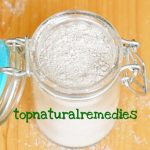Yarrow – A Multifunctional Digestive Aid
Yarrow (Achillea millefolium, Achillea wilhelmsii, Achillea nobilis) was used at first mostly as a vulnerary (hence its name, Achillea, given to it because it was thought that Achilles used it for healing the wounds of his soldiers), but then other therapeutic properties were discovered, and it began to be also used in the treatment of insomnia, anxiety, muscle spasms, infections, fever, water retention, amenorrhea, dismenorrhea, metrorrhagia, inappetence, indigestion, heartburn etc. In the following lines, we will focus on its digestive properties, which cover nearly all organs involved in the process of digestion.

Contents
Digestive uses of yarrow confirmed by scientific studies
- Antiulcerogenic: A study published in Journal of Ethnopharmacology in 2010 showed that a hydroalcoholic extract of Achillea millefolium inhibited ethanol-induced and acetic acid-induced gastric lesions by up to 81% and 65%, respectively, and also promoted significant regeneration of the gastric mucosa after ulcer induction.
- Prokinetic: A study published in Neurogastroenterology and Motility in 2012 proved that a standardized dry water extract obtained from Achillea millefolium flowering tops “exerts a direct spasmogenic effect on gastric antrum [and] this prokinetic effect observed in vivo could provide the pharmacological basis underlying its traditional use in the treatment of dyspepsia.”
- Antispasmodic: The results of a study published in Pakistan Journal of Pharmaceutical Sciences in 2014 confirmed that “the intestinal relaxation effect of Achillea wilhelmsii is supporting its traditional use as antispasmodic.” A study published in Journal of Ethnopharmacology in 2009 demonstrated the antispasmodic effect of Achillea nobilis L. subsp. sipylea (O. Schwarz) Bässler on the rat isolated duodenum. And a study published in African Journal of Traditional, Complementary and Alternative Medicines in 2013 demonstrated the antispasmodic effects of an Achillea millefolium L. extract in the isolated ileum of rat.
- Choleretic: A study publishd in Phytomedicine in 2006 identified the choleretic active principles in the traditional application forms of yarrow to be dicaffeoylquinic acids and luteolin-7-O-beta-D-glucuronide.
- Hepatoprotector: The protective effects of Achillea wilhelmsii essential oil on acetaminophen-induced oxidative stress in rat liver was demonstrated in a study published in Pharmaceutical Biology in 2015.
- Anthelmintic: A study published in Journal of Helminthology in 2008 concluded that “the entire plant of Achillea millefolium possesses significant anthelmintic activity.”
Preparation and administration
- Infusion: Add 2-3 tablespoons of dried flowers in 500 ml of hot boiled water and let steep for 5 minutes. Drink throughout the day.
- Tincture: Fill a 1 l recipient with fresh flowers, add alcohol 40% or plum brandy and let them macerate for 15 days under direct sunlight, shaking the recipient from time to time. Take 30 drops in a glass of water, 3 times a day.
- Wine: Add 30-50 g of dired flowers in 1 l of dry red wine and boil for 10 minutes. Do not sift. Use externally.
- Ointment: Fry 15 g of fresh flowers in 90 g of unsalted butter for 1-2 minutes and then let them macerate for 24 hours. Heat again, sift, and store the ointment in the refrigerator.



